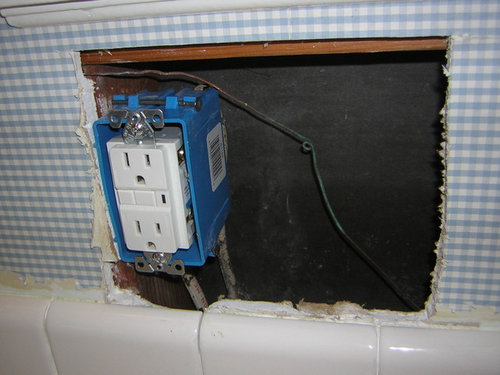Old House Ground Wire
rileyann
9 years ago
Related Stories

ARCHITECTUREStilt Houses: 10 Reasons to Get Your House Off the Ground
Here are 10 homes that raise the stakes, plus advice on when you might want to do the same
Full Story
GREEN BUILDINGThe Big Freeze: Inventors Break New Ground to Keep Things Cool
Old-fashioned fridges can be energy guzzlers, but there are more eco-friendly ways of keeping food fresh, as these global innovations show
Full Story
FURNITUREModern Icons: The Eames Wire Base Table
Simple modern table is light and versatile enough for every room in the house
Full Story
GROUND COVERSGround Force: 10 Top Ground Covers for Your Garden
Protect your soil from weeds and drought this summer with a living mulch of ground covers
Full Story
BASEMENTSRoom of the Day: Swank Basement Redo for a 100-Year-Old Row House
A downtown Knoxville basement goes from low-ceilinged cave to welcoming guest retreat
Full Story
DECORATING GUIDESInspiring Materials: Metal Wire
Add the Open Look of Wire to Your Lighting, Furnishings and Decor
Full Story
DIY PROJECTSHide All Those Wires in a DIY Charging Station
Keep your gadgets handy and charged with a flexible storage board you can design yourself
Full Story
ACCESSORIESHow to Hide Those Messy Wires
Untangle Yourself From Ugly Electrical Cords With a Few Tricks and Accessories
Full Story
LIGHTING10 Ways With Wall Lights That Don’t Need to Be Wired In
Learn how to add illumination to your home without carving into the walls
Full Story
CONTEMPORARY HOMESHouzz Tour: A New Home in an Old Backyard
With a large lot and an architect dad, building from the ground up was the perfect solution for this Los Angeles family
Full Story










rileyannOriginal Author
rileyannOriginal Author
Related Professionals
Eagan General Contractors · Cumberland General Contractors · Jacinto City General Contractors · Lewisburg General Contractors · Mentor General Contractors · Merritt Island General Contractors · Monroe General Contractors · Newington General Contractors · Parkersburg General Contractors · University City General Contractors · Greenwich Solar Energy Systems · Verona Solar Energy Systems · Carlsbad Home Automation & Home Media · Libertyville Home Automation & Home Media · Pittsburgh Home Automation & Home MediaRon Natalie
jakethewonderdog
rileyannOriginal Author
jakethewonderdog
rileyannOriginal Author
jakethewonderdog
davidrt28 (zone 7)
jakethewonderdog
Ron Natalie
rileyannOriginal Author
cold_weather_is_evil
jakethewonderdog
rileyannOriginal Author
jakethewonderdog
rileyannOriginal Author
rileyannOriginal Author
joefixit2
rileyannOriginal Author
joefixit2
rileyannOriginal Author
jakethewonderdog
rileyannOriginal Author
jakethewonderdog
rileyannOriginal Author
jakethewonderdog
rileyannOriginal Author
jakethewonderdog
rileyannOriginal Author